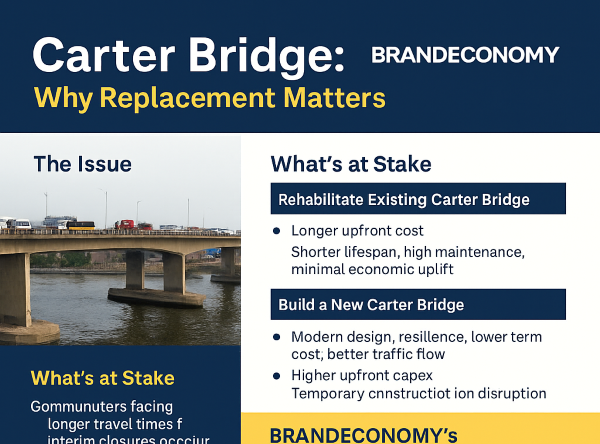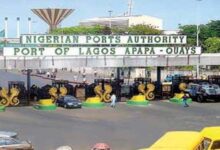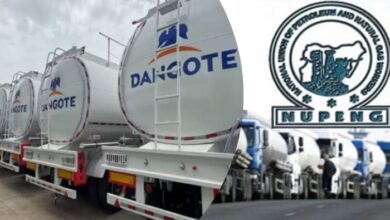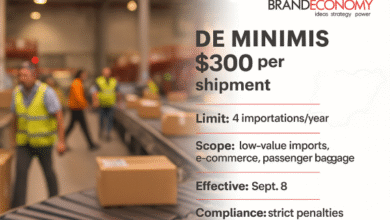Carter Bridge at Crossroads: Umahi Confirms Replacement Looms

The Carter Bridge, one of Lagos’ most iconic transportation arteries, appears to have reached the end of its useful life. Nigeria’s Minister of Works, Senator Dave Umahi, has admitted after a fresh inspection that the structure is “irredeemable” in its present form, with stakeholders now converging on the need for a complete replacement.
Why Carter Bridge Matters
Built as the first bridge linking Lagos Island to the mainland, the Carter Bridge has long carried heavy commuter and freight traffic. Its structural integrity has, however, been under constant question for decades, especially as population growth, urbanisation, and high axle loads have stretched its capacity far beyond original design limits. The bridge’s current condition has now escalated to a point where rehabilitation may no longer be viable.
What the Latest Inspections Reveal
Recent field checks led by the Works Ministry uncovered defects so severe that comprehensive rebuilding of Carter Bridge now looks more rational than patchwork rehabilitation. Government officials have clarified that while the Third Mainland Bridge is slated for rehabilitation, Carter Bridge stands out as the prime candidate for replacement.
Early scoping suggests that a full rebuild will require hundreds of billions of naira. Rehabilitation would likely cost nearly as much but fail to deliver long-term value, reinforcing the case for a new alignment. Financing discussions with international partners are reportedly underway.
How We Got Here: A Short History of a Workhorse
- 1901 — The Carter Bridge opened as Lagos’ first mainland–island connection, built during the colonial era and named after Governor Gilbert Thomas Carter.
- 1931 — A new Carter Bridge replaced the original span, with the Alaka–Ijora flyover later added in 1973.
- Late 1970s — The bridge was dismantled, redesigned, and rebuilt again to cope with the explosive growth of Lagos’ population and traffic.
Today, technical reviews show serious deterioration below the waterline. Stakeholders are leaning toward a new crossing rather than another round of life-extension works.
The Government’s Dilemma
Umahi disclosed that recent inspections of the underdeck of Carter Bridge revealed alarming deterioration. While consultants and contractors are still assessing if certain ramps can be salvaged to cut costs and time, preliminary indications suggest both the ramps and axial sections may need to go. He further noted that remnants of a previously demolished Carter Bridge—brought down by explosives decades ago—still lie underwater, creating additional navigational and engineering challenges.
Strategic Options on the Table
The Works Ministry is weighing two broad options:
- Constructing a brand-new Carter Bridge with a fresh alignment that avoids inherited structural and navigational problems.
- Partial salvage of components to maintain limited functionality while a new crossing is developed.
Umahi was clear, however, that the Federal Government has no intention of replicating this approach for the Third Mainland Bridge. “There is no plan to demolish and rebuild the Third Mainland Bridge. We are committed to full rehabilitation of that critical link,” he emphasized.
Business and Economic Implications
The Carter Bridge’s fate is more than an engineering issue—it carries wide economic and logistical consequences. Lagos is Nigeria’s commercial nerve centre, and any disruption to its transport arteries directly impacts trade, productivity, and investor confidence.
- Commuters could face prolonged gridlock if replacement works are not carefully staged.
- Businesses and logistics operators may see higher transport costs, with implications for supply chains and retail pricing.
- Real estate and urban planning in Lagos Island and Mainland corridors could be reshaped by any new alignment.
The BRANDECONOMY Take
Infrastructure renewal in Nigeria is often delayed until crisis point, but the Carter Bridge presents an opportunity for a paradigm shift. Instead of patchwork fixes, a well-financed, modern replacement—integrated into a long-term transport master plan—can unlock economic efficiency, reduce congestion, and reinforce Lagos’ status as West Africa’s business hub. However, the government must strike a delicate balance between urgency, cost, and minimal disruption to daily commerce.
Why a New Carter Bridge Changes Lagos’ Economics
1) Travel time and reliability: A modern alignment with better ramps and traffic flow can reduce congestion and improve reliability — the factor logistics operators value most.
2) Freight productivity: Stronger load capacity and safer geometry mean fewer closures, crashes, and disruptions that quietly tax the economy.
3) Urban renewal: A re-sited bridge can ease the gridlock around Idumota and Iddo, unlock valuable waterfront property, and catalyse urban upgrades on both ends of the lagoon.
Lessons from Global Benchmarks
New York’s Tappan Zee Bridge replacement showed the value of a rigorous alternatives analysis: rehabilitation was deemed unsafe and uneconomical compared to building a new bridge. Transparent evidence, backed by innovative financing, de-risked the political decision and delivered regional growth benefits.
Johannesburg’s Nelson Mandela Bridge demonstrated how a bridge can be more than transport infrastructure. By reconnecting fragmented city districts, it catalysed commercial and cultural revival in the CBD.
Ghana’s recent network approach underscores the importance of climate resilience. For coastal cities like Lagos, factoring in sea-level rise, storm surges, and corrosion risks is no longer optional.
What Lagos Must Count in the Cost–Benefit Equation
- User benefits: time savings, reliability, crash reduction, and lower vehicle operating costs.
- Wider economic impacts: improved freight flows, land value uplift, and opportunities for waterfront revitalisation.
- Lifecycle economics: whole-life cost of rehab versus replacement, resilience to climate stress, and long-term maintenance obligations.
- Construction impacts: traffic disruption, marine navigation, and community effects that require careful mitigation.
Smart Delivery Principles for Lagos
- Evidence-led decision-making: A transparent alternatives analysis will make the project defensible and financeable.
- Blended financing: A mix of budgetary allocation and long-tenor financing will reduce strain on the public purse.
- City-shaping design: The new bridge must integrate with BRT, rail, and non-motorised transport, not just carry vehicles.
- Governance discipline: A lean project vehicle with independent design checks and milestone-linked payments will guard against cost overruns.
BRANDECONOMY Verdict
Carter Bridge’s replacement is not just inevitable — it is an opportunity to reset Lagos mobility for the next generation. Done right, Lagos gains faster trips, safer freight, stronger waterfronts, and a signature piece of infrastructure worthy of Africa’s business capital. The winning formula lies in transparent planning, resilient design, affordable financing, and an alignment that reshapes the city for growth. Hope this can be achieved without further taxing the already heavily taxed transporters and Lagosians.











